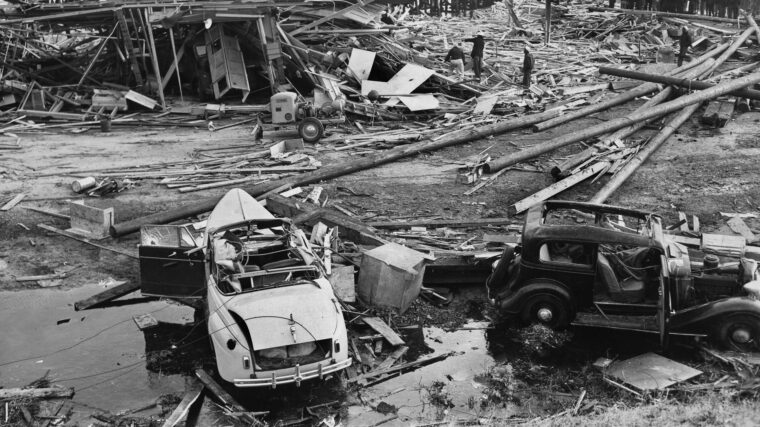
WWII
The Port Chicago Disaster
By Mason B. WebbIn the summer of 1944, with American forces battling their way ever closer to the Japanese home islands, the need for ammunition in the Pacific was hitting its peak. Read more
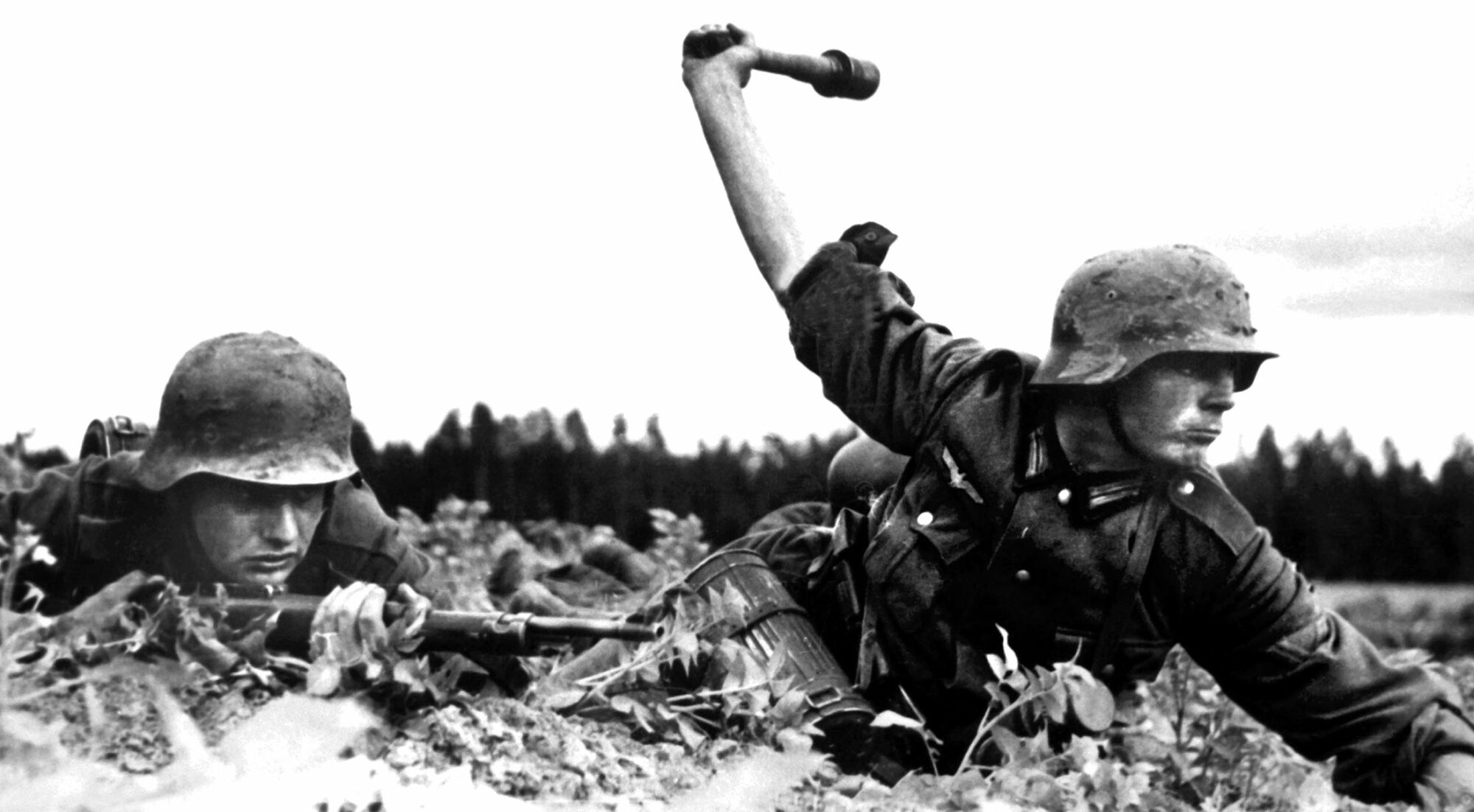

WWII
In the summer of 1944, with American forces battling their way ever closer to the Japanese home islands, the need for ammunition in the Pacific was hitting its peak. Read more

WWII
When I was a young boy in Seattle, my father told me about a fake town that had been built on top of Boeing’s Plant 2 during the war. Read more
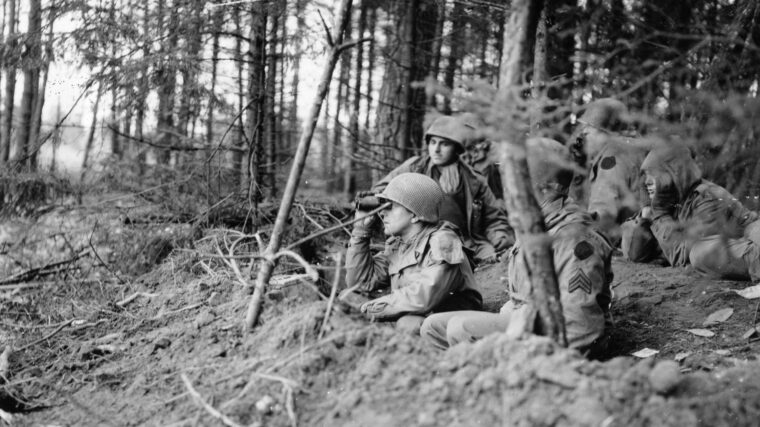
WWII
By mid-January 1945, the famous Battle of the Bulge, a massive and fatal failure for the Third Reich, was virtually over. Read more
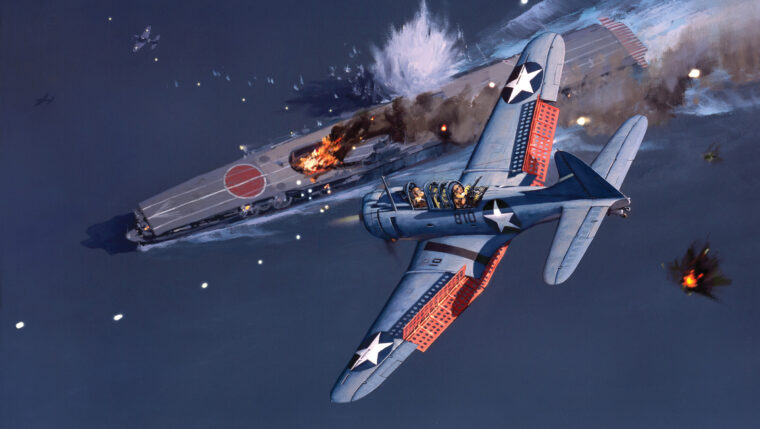
WWII
On August 7, 1942, Petty Officer 1st Class Saburo Sakai was piloting his Mitsubishi A6M2 “Zero” fighter in the skies over Sealark Channel in the Solomon Islands. Read more
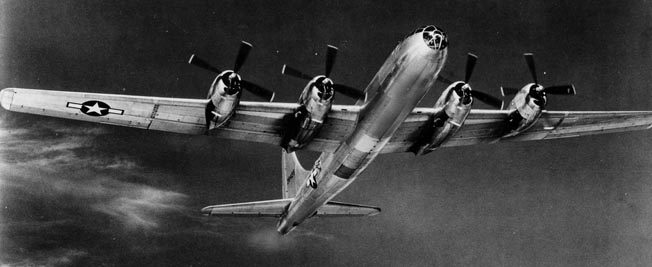
WWII
Major Sam P. Bakshas woke up that morning with the secrets in his head. He was one of the men flying B-29 Superfortress bombers from three Pacific islands—Guam, Saipan, and Tinian. Read more
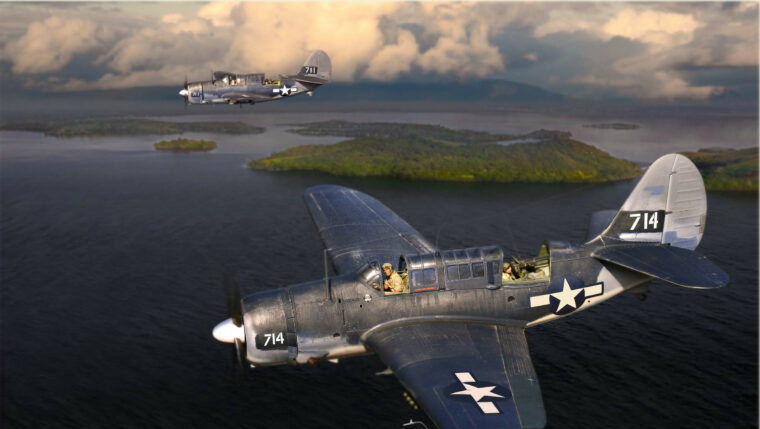
WWII
After the Japanese stopped resisting in the skies over Rabaul and pulled their aircraft out of the Solomons and Bismarcks battle area in mid-February 1944, it began to appear that U.S. Read more
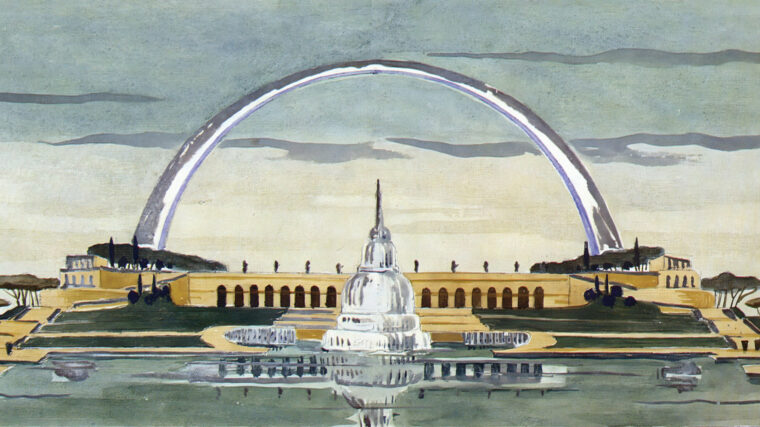
WWII
Visitors to a certain part of Rome today may not even be aware that they are walking in an area that came about because of an architectural vision of Benito Mussolini, Italy’s infamous fascist dictator. Read more
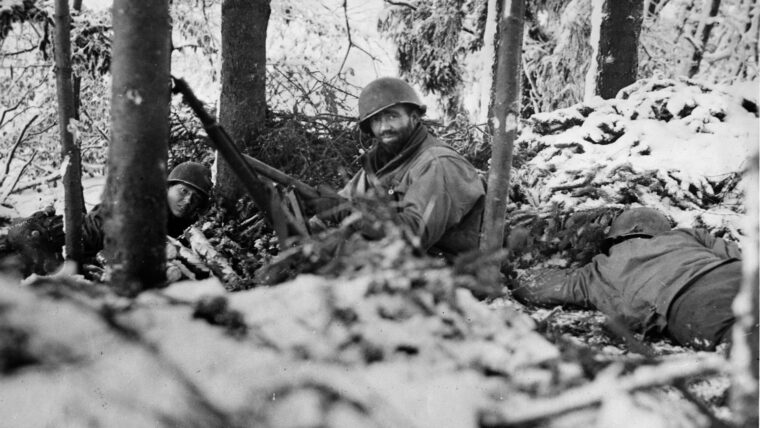
WWII
First Lieutenant Tom Flynn and his fellow POWs remained locked inside their boxcar prison on a Frankfurt railroad siding on Christmas Eve, 1944, as air raid sirens wailed and bombs exploded throughout the city. Read more
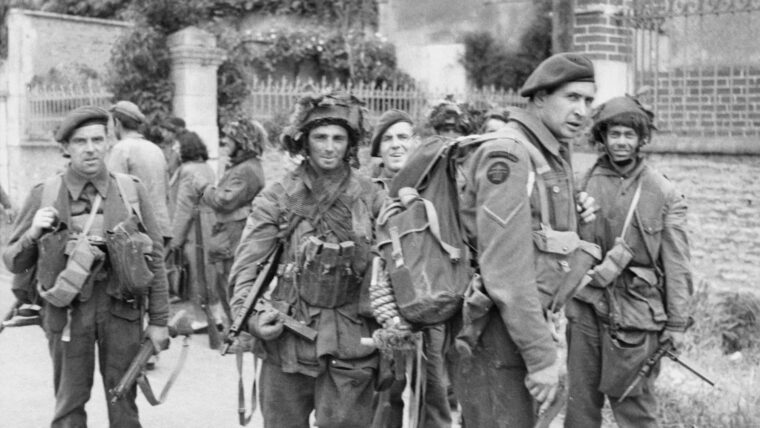
WWII
After successfully fighting seasickness during the crossing of the English Channel, Lance-Corporal Ted Brooks of Number 48 (Royal Marine) Commando arrived on Nan Red Beach—which formed the left flank of Juno Beach—on the morning of June 6, 1944. Read more
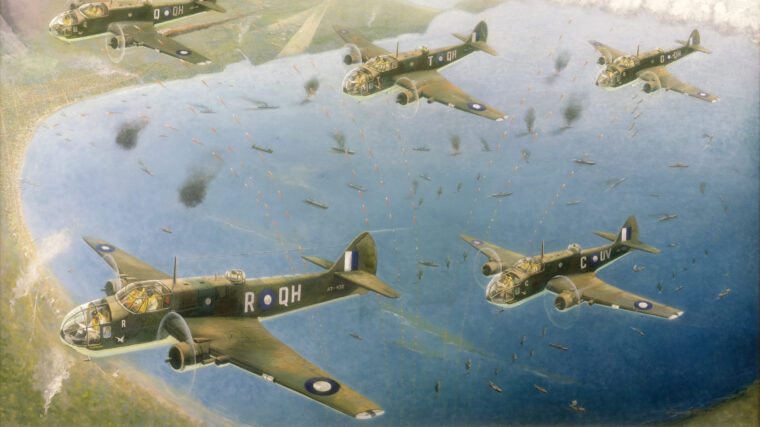
WWII
During early World War II operations in the Pacific, Geoff Fisken would become one of the most outstanding pilots of the RNZAF—the Royal New Zealand Air Force. Read more
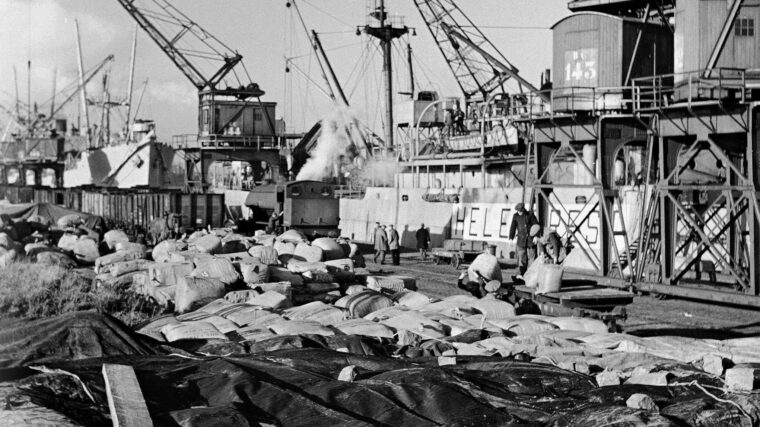
WWII
After the war in Europe was won, General Dwight D. Eisenhower had many opportunities to review various campaigns with the leaders of the Soviet Army–– including even Joseph Stalin himself. Read more
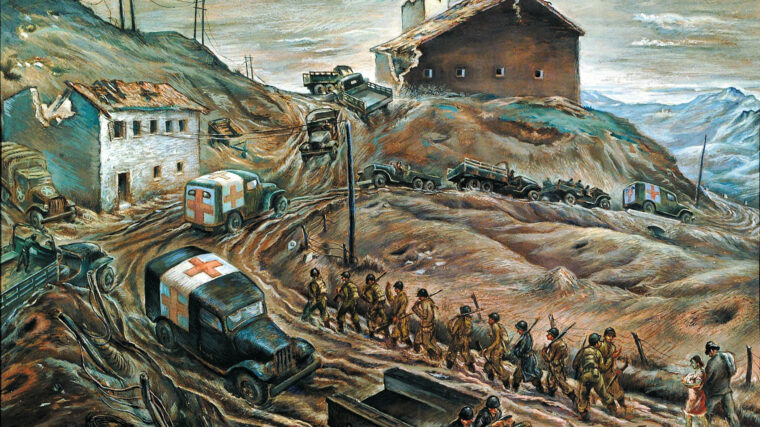
WWII
The reason for it was unthinkable. The Gothic Line, the last line of defense in Italy, was necessary, but senior German commanders had not been concerned that it would ever be contested by Allied forces. Read more
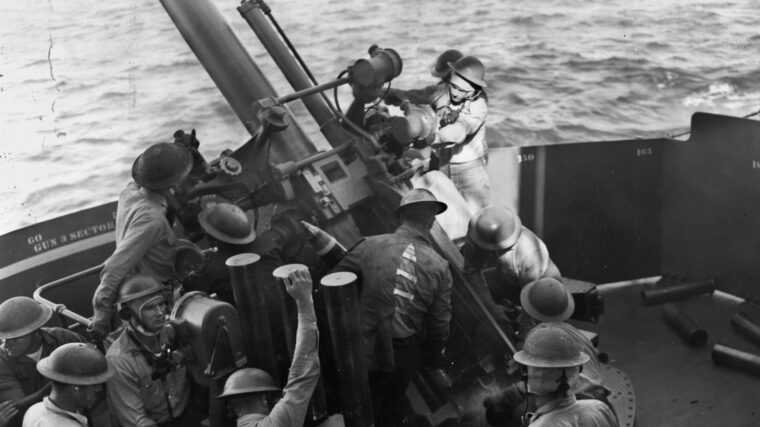
WWII
The fading daylight of August 6, 1942, found the American heavy cruisers Astoria and Chicago as part of Task Force 61, under the command of Vice Admiral Jack Fletcher, steaming toward the South Pacific island of Guadalcanal. Read more
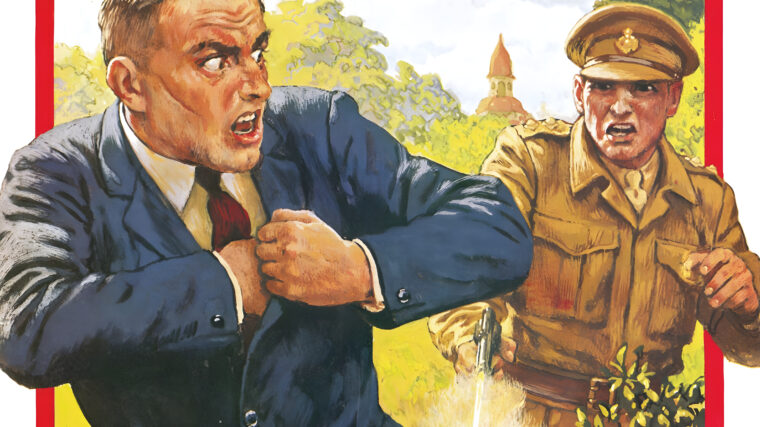
WWII
Mildred “Midge” Gillars was born in Portland, Maine, took drama lessons in New York City, appeared in vaudeville, worked as an artist’s model in Paris and a dressmaker’s assistant in Algiers, and taught English at the Berlitz School in Berlin before—motivated by love and fear—she became the notorious “Axis Sally,” one of the Nazis’ leading radio propagandists. Read more
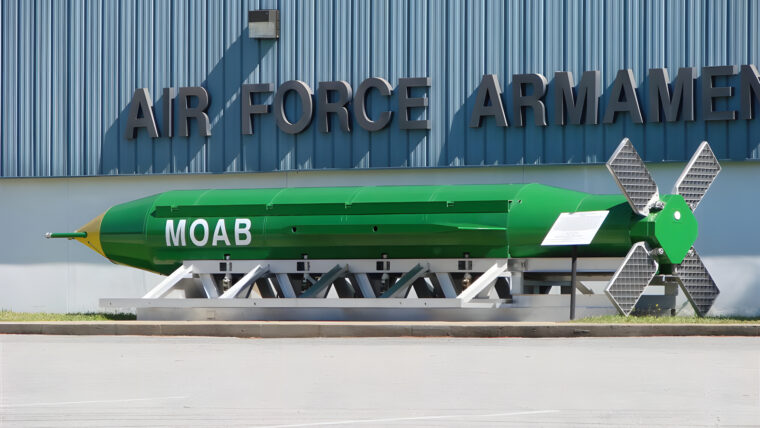
WWII
It’s called the GBU-43/B Massive Ordnance Air Blast, nicknamed the Mother of All Bombs, and it is the largest non-nuclear bomb currently in the U.S. Read more
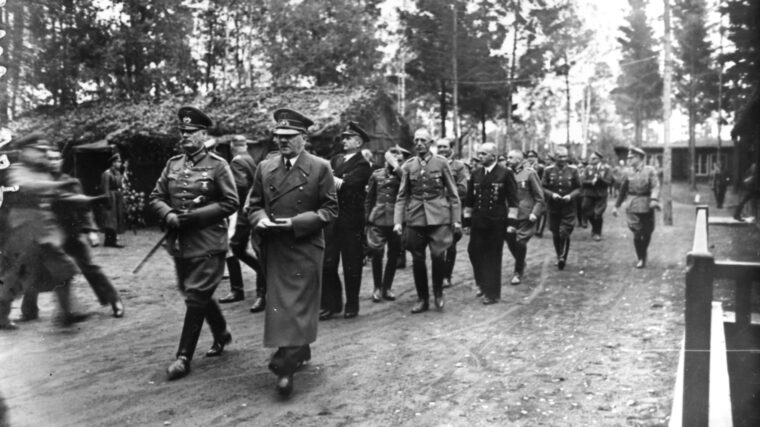
WWII
With the end of World War I, the German Army had not been defeated in the field. Read more
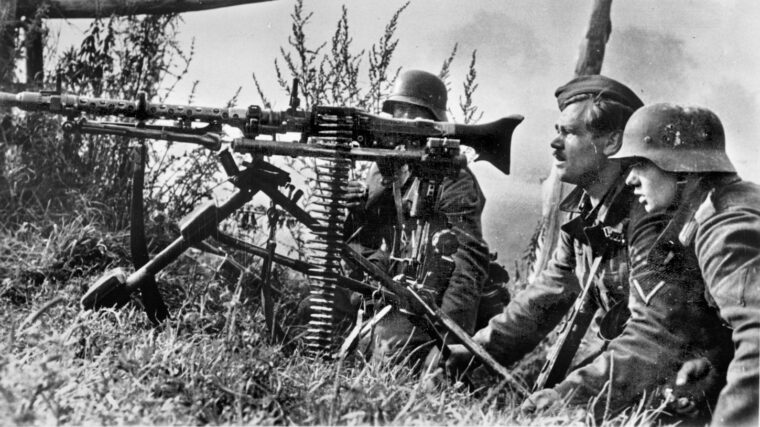
WWII
As Russian and German tanks exchanged fire, German Corporal Erwin Engler realized that if he was to get his wound treated, to even survive—if he was to ever see his family again back in what had been the Polish Corridor—he was going to have to make a dash across open ground to reach the safety of a wooded area. Read more
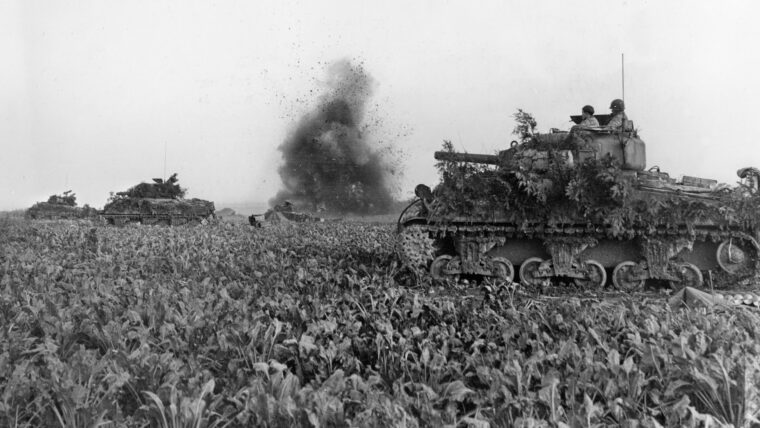
WWII
Sergeant Carl Erickson sat in shock inside his Sherman tank as he watched emaciated people dressed in tattered, striped suits smile and feebly wave to him and his fellow tankers. Read more
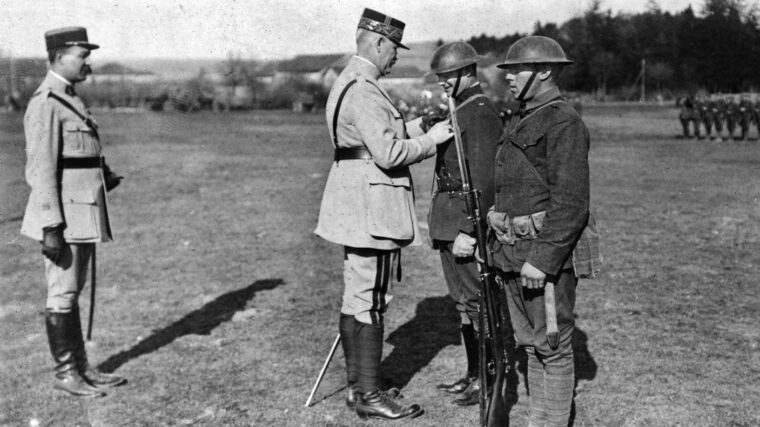
WWII
On July 14, 1940, William Donovan stood on the pier fronting New York harbor and waited to board the Pan Am flying boat named the Lisbon Clipper for a flight that would take him to Portugal and then to London, his ultimate destination. Read more
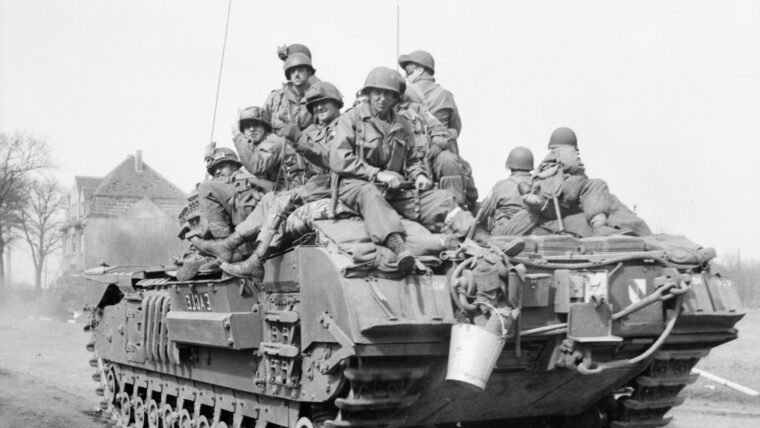
WWII
The jerk of the canopy opening was a reassuring sensation. Not so reassuring was the storm of small arms and artillery fire that roared up from the ground. Read more